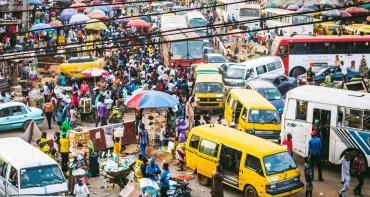If all 46 countries categorised as “Least Developed” by the UN achieve annual GDP growth of at least 7%, their combined GDP could almost double – between 2022 and 2031 – going from USD $1.1 trillion to more than USD $2.25 trillion.

—> This is the target .
Yet, in the rapidly changing global economic landscape, with the threat of a worldwide recession and multiple and interrelated food, energy, and debt crises, achieving this ambitious growth target seems a herculean task.
It is fair to say that the expansion in economic output, as envisaged in the DPoA, could increase LDCs’ (on average), enabling these countries to make substantial progress towards the socio-economic objectives envisaged in the Sustainable Development Goals (SDGs) and towards .
However, the current predicted rate of annual growth for these economies, over the next decade, sits at 4.8% – resulting in a potential combined GDP of only USD $1.8 trillion by 2031 (Figure 1). At the country level, out of all 46 LDCs, only Rwanda and Niger are expected to grow at more than 7%.
On top of this is the reality that the last programme of action, , fell short of its targets, leaving LDCs’ per capita income, in 2020, USD $285 lower than the estimated USD $1350 that could have been achieved.
If this growth trajectory is sustained during the DPoA, the rise in per capita income is likely to be limited to around USD $235.
Figure 1: GDP growth targets and estimates during the IPoA and DPoA

Source: ĚÇĐÄĚ˝»¨ (using )
Definitions: DPoA: the United Nations’ Doha Programme of Action and IPoA: the Istanbul Programme of Action.
Note: Data for two LDCs, Kiribati and Tuvalu, are missing.
Realising growth ambitions
Accomplishing the DPoA’s growth target is critical for two main reasons. First, strong and sustained growth is key to achieving a number of the SDGs and mirrors to be realised by 2030. Second, LDCs’ growth performance will directly and indirectly influence all other socio-economic outcomes and goals envisaged in the .
To reach the 7% GDP growth goal, LDCs and their development partners need to invest as much as USD annually.
So, while renewing the global community’s commitment to tackling the challenges that hinder faster economic growth and development in LDCs remains the gold standard, narrowing the GDP growth gap may be necessary if we are to reach most and those related to
To help accelerate economic development and deliver inclusive and equitable growth and sustained structural transformation in LDCs, the international community needs to enhance support for:
- strengthening LDCs’ institutional and productive capacities,
- expanding exports,
- building digital capabilities,
- adopting and adapting new technologies,
- and engaging in greener production and trade on the path to a .
The forthcoming in Doha provides an excellent opportunity to advance new ideas and secure global commitments to meet LDCs’ urgent support needs and, ultimately, deliver decisive action to accelerate the implementation of the DPoA.
| Did You Know: The UN’s Doha Programme of Action (DPoA) runs from 2022 to 2031, seeking to support the world’s 46 least developed countries to achieve faster growth and development. |
Blog by: Brendan Vickers, Head of Section, Salamat Ali, Trade Economist, and Neil Balchin, Economic Adviser: Trade Policy Analysis, The International Trade Policy Section of the ĚÇĐÄĚ˝»¨
Media contact
- Rena Gashumba Communications Adviser, Communications Division, ĚÇĐÄĚ˝»¨
- T: +44 7483 919 968 | E-mail


